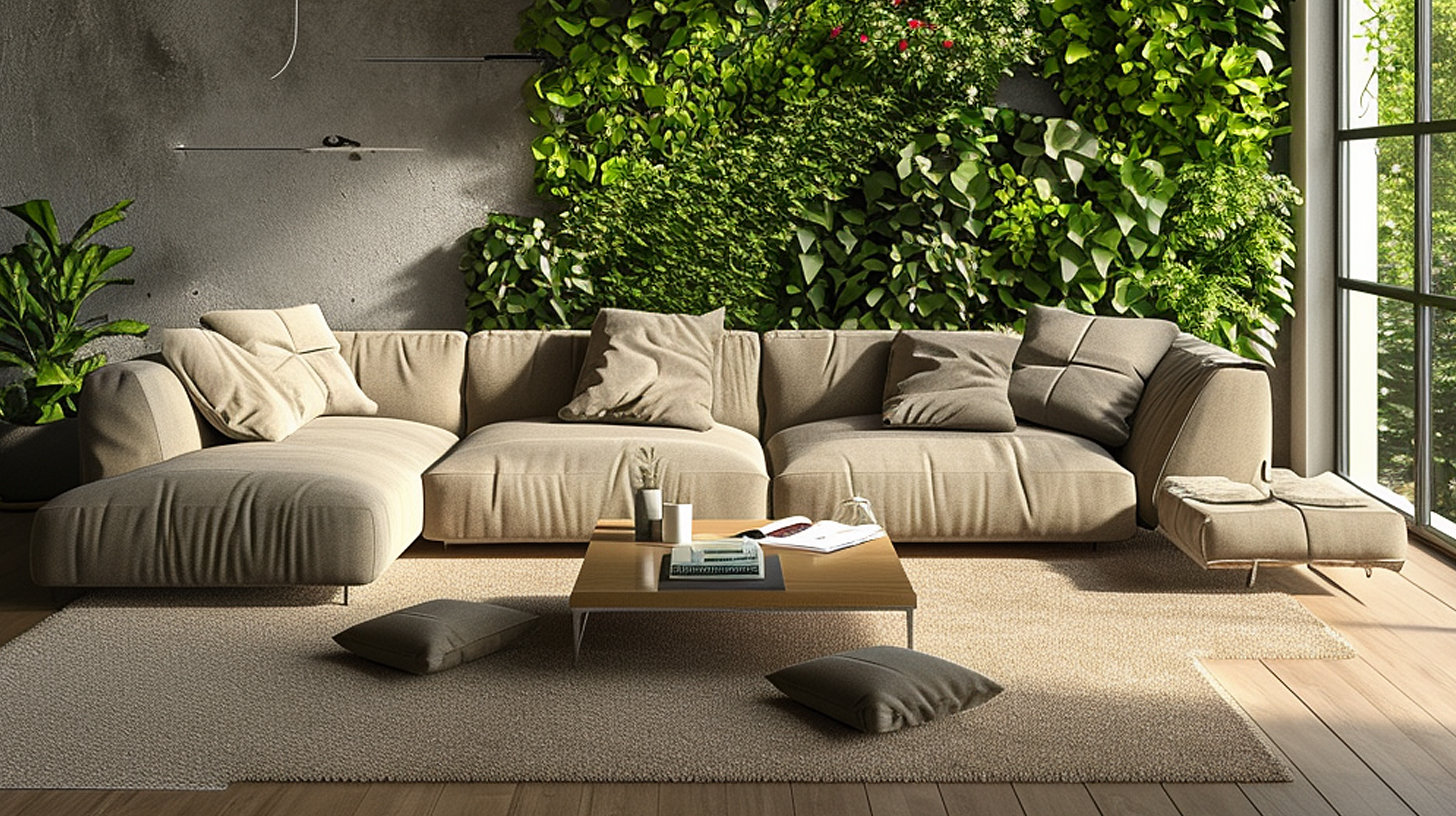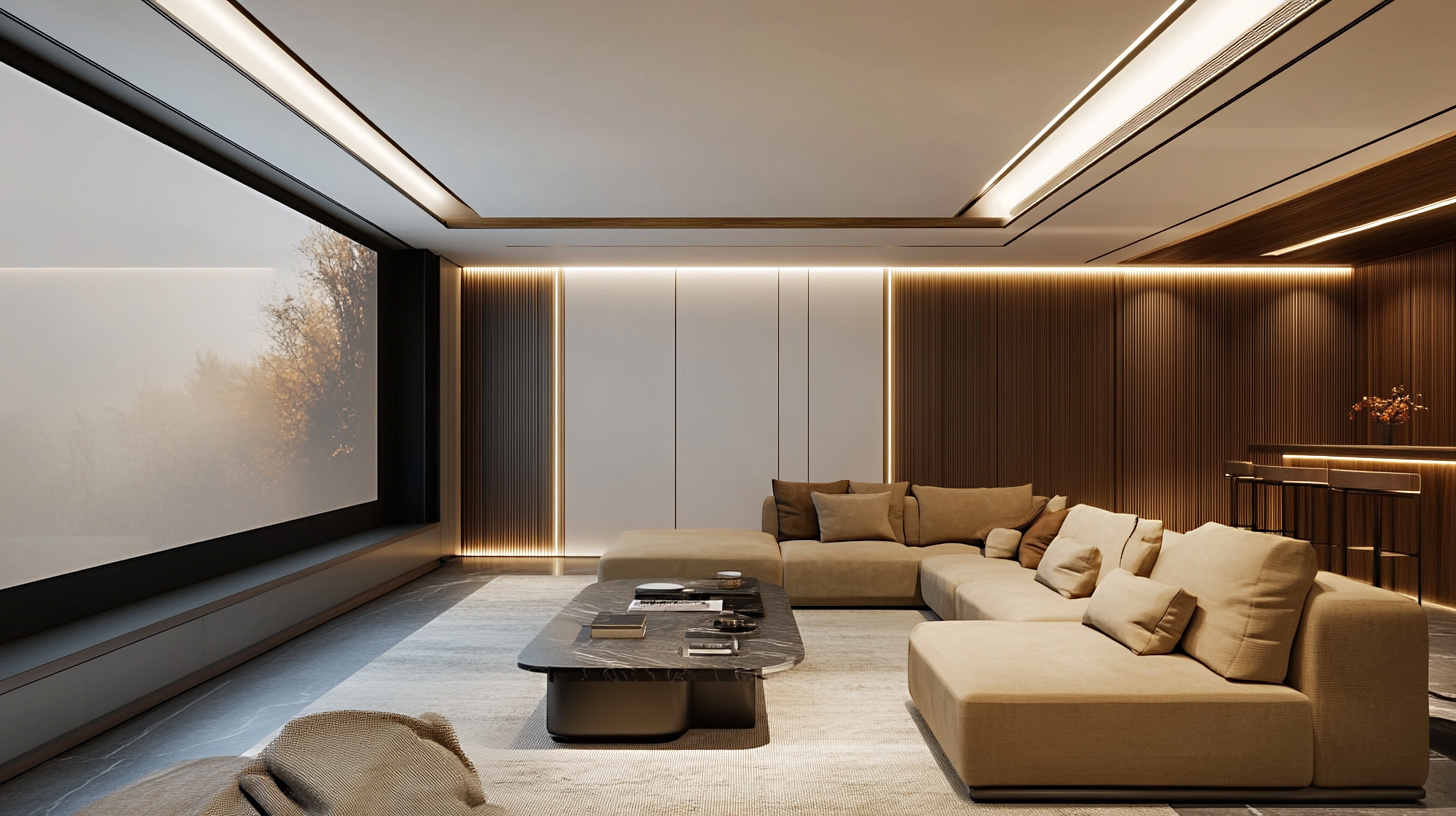Eco-friendly decor has emerged as a powerful trend in interior design, combining sustainability with aesthetic appeal. This approach to home decoration focuses on using environmentally friendly materials, reducing waste, and minimizing the carbon footprint of our living spaces. Sustainable home decor encompasses a wide range of practices, from choosing recycled or upcycled furniture to incorporating energy-efficient lighting and natural textiles.
Eco-conscious design goes beyond simply selecting green products; it involves a holistic approach to creating spaces that are both beautiful and environmentally responsible. This can include optimizing natural light, using low-VOC paints, and selecting furniture made from responsibly sourced materials. Green interior design also emphasizes the importance of longevity, encouraging the use of durable, timeless pieces that won’t need frequent replacement.
Environmentally friendly decorating doesn’t mean sacrificing style. In fact, many eco-friendly decor options offer unique textures, colors, and patterns that can enhance the overall aesthetic of a space. From reclaimed wood furniture to organic cotton textiles, these sustainable choices often bring a sense of warmth and character to interiors.
By embracing eco-friendly decor, homeowners can create spaces that not only look good but also contribute to a healthier planet. This approach to design proves that sustainability and style can coexist harmoniously, offering a path to beautiful, responsible living.
The Benefits of Choosing Eco-Friendly Decor for Your Home
Opting for eco-friendly decor in your home offers numerous advantages that extend beyond aesthetics. By selecting sustainable materials and energy-efficient products, you can significantly reduce your carbon footprint while creating a beautiful living space. One of the primary benefits is improved indoor air quality, as eco-friendly materials often emit fewer harmful volatile organic compounds (VOCs) compared to conventional alternatives. This can lead to a healthier home environment for you and your family.
Energy efficiency is another key advantage of eco-friendly decor. Many sustainable products, such as LED lighting and smart thermostats, are designed to minimize energy consumption, resulting in lower utility bills and reduced strain on natural resources. Additionally, choosing furniture and accessories made from sustainable materials like bamboo, reclaimed wood, or recycled plastics helps conserve precious natural resources and supports environmentally responsible manufacturing practices.
By embracing eco-friendly decor, you’re not only enhancing your living space but also contributing to a more sustainable future. As an added bonus, many of these products are designed to be durable and long-lasting, potentially saving you money in the long run while reducing waste.
Top Eco-Friendly Materials for Stylish Home Decor
When it comes to creating a stylish and environmentally conscious home, choosing the right materials is key. Bamboo furniture has gained popularity for its durability and rapid renewability, making it an excellent choice for eco-friendly decor. Recycled glass is another versatile option, offering unique aesthetics in everything from countertops to decorative pieces. Organic cotton textiles provide a sustainable alternative for bedding, curtains, and upholstery, ensuring both comfort and environmental responsibility. Reclaimed wood adds character and history to your space while reducing deforestation. For flooring, cork is an outstanding eco-friendly option, offering natural insulation, sound absorption, and a soft, comfortable surface underfoot. By incorporating these materials into your home decor, you can achieve a stylish living space that aligns with your environmental values.
Upcycling and Repurposing: Creative Ways to Incorporate Eco-Friendly Decor
Upcycling and repurposing offer creative and eco-friendly solutions for home decor enthusiasts. By breathing new life into old items, you can reduce waste and create unique pieces that reflect your personal style. DIY eco-decor projects are an excellent way to start, transforming everyday objects into stunning home accessories. For instance, mason jars can become charming light fixtures, while old wooden pallets can be repurposed into rustic shelving units or coffee tables.
Repurposed furniture ideas are limitless, allowing you to reimagine vintage pieces for modern use. An old ladder can serve as a trendy bookshelf, or a worn-out dresser can be revamped into a stylish bathroom vanity. Upcycled home accessories add character to any space; consider turning colorful glass bottles into vases or transforming discarded fabric scraps into eye-catching throw pillows.
Scouring flea markets and thrift stores for vintage decor finds can yield unexpected treasures. These pieces often have a story to tell and can serve as conversation starters in your home. With a little creativity and elbow grease, you can transform these forgotten items into statement pieces that are both environmentally conscious and visually appealing.
By incorporating upcycled and repurposed elements into your decor, you’ll not only create a unique and personalized living space but also contribute to a more sustainable lifestyle.
Energy-Efficient Lighting Solutions for a Greener Home
Energy-efficient lighting solutions are essential for creating a greener home and reducing your carbon footprint. LED bulbs are at the forefront of this revolution, consuming significantly less energy than traditional incandescent bulbs while lasting much longer. These bulbs come in various colors and brightness levels, making them suitable for any room in your house.
Maximizing natural light is another effective strategy for reducing energy consumption. Consider installing skylights or larger windows to allow more sunlight into your home during the day. Use light-colored curtains or blinds that can be easily opened to let in natural light when needed.
Solar-powered lamps are an excellent option for outdoor lighting. These eco-friendly fixtures harness the sun’s energy during the day and provide illumination at night, requiring no electricity from the grid. They’re perfect for garden paths, driveways, and patios.
Smart lighting systems offer advanced control over your home’s illumination. These systems allow you to schedule lighting, adjust brightness, and even control lights remotely via smartphone apps. By automating your lighting, you can ensure lights are only on when needed, further reducing energy waste.
By implementing these energy-efficient lighting solutions, you can create a more sustainable home environment while also enjoying the benefits of reduced energy bills and improved lighting quality.
Eco-Friendly Paint and Wallpaper Options for a Fresh Look
When refreshing your home’s interior, opting for eco-friendly paint and wallpaper choices can make a significant difference in both aesthetics and environmental impact. Low-VOC (Volatile Organic Compound) paints are an excellent starting point, as they emit fewer harmful chemicals into the air, improving indoor air quality. These paints are available in a wide range of colors and finishes, ensuring you don’t have to compromise on style.
Natural pigments derived from plants, minerals, and clay offer another sustainable alternative. These paints not only provide rich, earthy tones but also tend to be biodegradable and free from synthetic additives. For those seeking pattern and texture, eco-friendly wallpapers made from recycled materials, sustainably sourced fibers, or even grass cloth can add depth and interest to your walls.
Non-toxic finishes are crucial for both paint and wallpaper applications. Water-based sealants and adhesives minimize chemical exposure during and after installation. When selecting your materials, look for certifications such as Greenguard or Cradle to Cradle, which indicate products that meet strict environmental and health standards.
By choosing these eco-conscious options, you can achieve a fresh look in your home while reducing your environmental footprint and creating a healthier living space for you and your family.
Bringing Nature Indoors: Incorporating Plants in Your Eco-Friendly Decor
Incorporating plants into your home decor not only adds a touch of natural beauty but also contributes to a healthier living environment. Indoor plants are excellent air purifiers, removing toxins and increasing oxygen levels in your space. Consider adding low-maintenance options like snake plants, spider plants, or peace lilies to improve air quality while enhancing your interior design.
Vertical gardens are an innovative way to maximize greenery in limited spaces. These living walls can serve as stunning focal points while efficiently utilizing vertical surfaces. You can create a DIY vertical garden using recycled materials or invest in modular systems designed for easy installation and maintenance.
When selecting planters, opt for sustainable options made from eco-friendly materials such as recycled plastic, bamboo, or reclaimed wood. These choices not only complement your plants but also align with environmentally conscious design principles.
Embracing biophilic design, which seeks to connect occupants with nature, can significantly impact your well-being. Incorporate natural textures, materials, and patterns alongside your indoor plants to create a harmonious, nature-inspired living space. This approach can reduce stress, improve cognitive function, and increase overall satisfaction with your home environment.
Sustainable Textiles and Fabrics for a Cozy, Eco-Conscious Home
Sustainable textiles and fabrics are revolutionizing the way we create cozy, eco-conscious living spaces. Organic cotton bedding offers a luxurious sleeping experience while minimizing environmental impact. Its production uses fewer pesticides and water, making it a responsible choice for conscientious consumers.
Hemp curtains are gaining popularity due to their durability and natural resistance to mold and UV rays. This versatile fabric adds a touch of rustic elegance to any room while supporting sustainable agriculture practices.
Recycled polyester rugs provide a soft, plush feel underfoot while giving new life to discarded plastic bottles. These rugs are not only environmentally friendly but also easy to clean and maintain, making them ideal for high-traffic areas.
Natural fiber upholstery, such as linen, wool, or jute, offers a timeless appeal and excellent durability. These materials are biodegradable and often require fewer chemical treatments, reducing their environmental footprint.
By incorporating these sustainable textiles into your home decor, you can create a comfortable living space that aligns with your eco-conscious values. These materials not only look and feel great but also contribute to a healthier planet for future generations.
Water Conservation: Eco-Friendly Bathroom and Kitchen Decor Ideas
Water conservation is a crucial aspect of sustainable living, and incorporating eco-friendly elements into your bathroom and kitchen can significantly reduce water consumption. Low-flow fixtures are an excellent starting point, offering substantial water savings without compromising functionality. These include low-flow showerheads, faucet aerators, and dual-flush toilets, which can cut water usage by up to 50% compared to traditional fixtures.
Greywater systems present another innovative solution for water conservation. These systems collect and treat water from sinks, showers, and washing machines, allowing it to be reused for irrigation or toilet flushing. By implementing a greywater system, households can dramatically decrease their overall water consumption and reduce strain on municipal water supplies.
When it comes to appliances, opting for water-saving models can make a significant impact. Look for dishwashers and washing machines with Energy Star certifications, which typically use 20-30% less water than standard models. Some advanced dishwashers even feature soil sensors that adjust water usage based on the load’s cleanliness, further optimizing water consumption.
Lastly, consider sustainable countertops made from recycled materials or rapidly renewable resources. These eco-friendly options not only conserve water during production but also contribute to a more environmentally conscious home design. By implementing these water-saving strategies and choosing sustainable materials, homeowners can create beautiful, functional spaces that prioritize water conservation and environmental stewardship.
Embracing Eco-Friendly Decor for a Sustainable and Stylish Future
Sustainable design is not just a passing trend but a necessary shift towards a more responsible and conscious way of living. By embracing eco-friendly decor, we can create beautiful, stylish spaces that reflect our values and contribute to a healthier planet.
The benefits of sustainable design extend far beyond aesthetics. From reducing our carbon footprint to improving indoor air quality, eco-friendly decor choices have a positive impact on both our personal well-being and the environment. Moreover, as consumers increasingly demand sustainable products, the market for eco-friendly decor continues to grow, offering more options and innovations than ever before.
By making mindful choices in our home decor, we can each play a part in creating a more sustainable future. Whether it’s opting for recycled materials, choosing energy-efficient lighting, or supporting local artisans, every decision counts. Remember that transitioning to a more eco-friendly home doesn’t have to happen overnight – small, consistent changes can lead to significant impact over time.
As we move forward, let’s continue to educate ourselves, support sustainable practices, and inspire others to join in this important journey. By doing so, we can create homes that are not only beautiful and comfortable but also kind to our planet, ensuring a brighter, greener future for generations to come.










